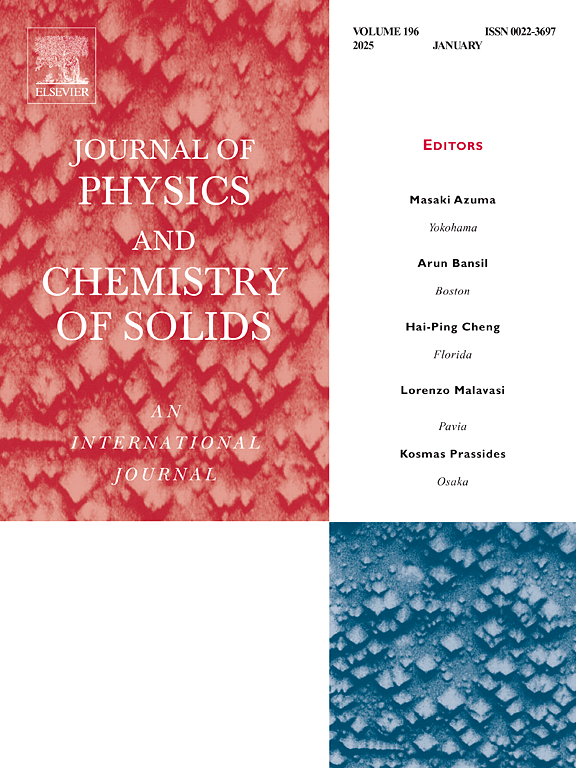Relativistic band structure engineering and optical-thermoelectric properties enhancement in Ho-doped Pr2O3 (1.25%, 2.5%): A DFT-based GGA+U+SOC first-principles study for next-generation PC-LEDs applications
IF 4.9
3区 材料科学
Q2 CHEMISTRY, MULTIDISCIPLINARY
引用次数: 0
Abstract
This study presents a detailed computational analysis of holmium-doped praseodymium oxide (Ho doped-Pr2O3), focusing on changes in electronic structure, optical behavior, and thermoelectric performance at 1.25% (Ho–Pr2O3) and 2.5% (2Ho–Pr2O3) doping levels. Using DFT with GGA+U+SOC, the research explores how Ho doping alters Pr2O3's properties. The band gap increased from 3.31 eV (pure) to 3.52 eV (1.25%) and then dropped to 3.33 eV (2.5%). Formation energy calculations confirmed the stability of the doped structures. Optical results showed preserved transparency in the visible range and improved UV absorption—ideal for phosphor-converted LEDs. Thermoelectric analysis revealed enhanced electrical conductivity and reduced thermal conductivity, though the Seebeck coefficient decreased, lowering the overall ZT value. These findings offer valuable insights into how rare-earth dopants like Ho can tune the optoelectronic and thermoelectric properties of lanthanide oxides, helping to guide the design of advanced materials for energy and photonic applications.
ho掺杂Pr2O3(1.25%, 2.5%)的相对论能带结构工程和光热电性能增强:下一代pc - led应用中基于dft的GGA+U+SOC第一性原理研究
本研究对掺钬氧化镨(Ho dopedmium oxide, Ho - pr2o3)进行了详细的计算分析,重点研究了掺量为1.25% (Ho - pr2o3)和2.5% (Ho - pr2o3)时电子结构、光学行为和热电性能的变化。利用GGA+U+SOC的DFT,研究了Ho掺杂对Pr2O3性能的影响。带隙从3.31 eV(纯)增加到3.52 eV(1.25%),然后下降到3.33 eV(2.5%)。形成能计算证实了掺杂结构的稳定性。光学结果表明,在可见光范围内保持了透明度,并改善了紫外线吸收——这是磷光转换led的理想选择。热电分析表明,虽然Seebeck系数降低,但电导率提高,导热系数降低,整体ZT值降低。这些发现为像Ho这样的稀土掺杂剂如何调节镧系氧化物的光电和热电性能提供了有价值的见解,有助于指导用于能源和光子应用的先进材料的设计。
本文章由计算机程序翻译,如有差异,请以英文原文为准。
求助全文
约1分钟内获得全文
求助全文
来源期刊
CiteScore
7.80
自引率
2.50%
发文量
605
审稿时长
40 days
期刊介绍:
The Journal of Physics and Chemistry of Solids is a well-established international medium for publication of archival research in condensed matter and materials sciences. Areas of interest broadly include experimental and theoretical research on electronic, magnetic, spectroscopic and structural properties as well as the statistical mechanics and thermodynamics of materials. The focus is on gaining physical and chemical insight into the properties and potential applications of condensed matter systems.
Within the broad scope of the journal, beyond regular contributions, the editors have identified submissions in the following areas of physics and chemistry of solids to be of special current interest to the journal:
Low-dimensional systems
Exotic states of quantum electron matter including topological phases
Energy conversion and storage
Interfaces, nanoparticles and catalysts.

 求助内容:
求助内容: 应助结果提醒方式:
应助结果提醒方式:


